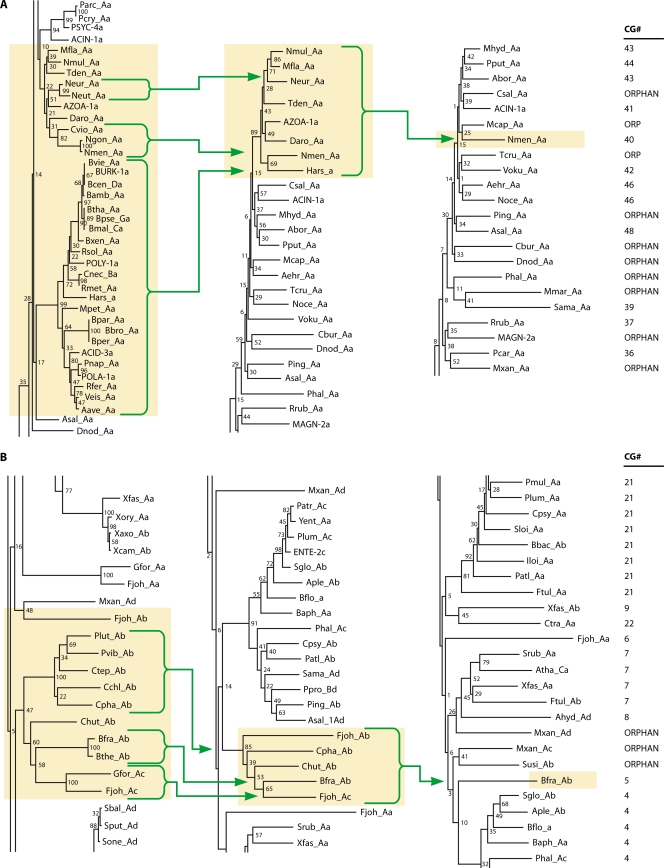FIG. 4.
Progression of tree-making steps to generate cohesion groups. (A) A “snapshot” of the large master tree of Ask sequences is shown in the vicinity of the ultimate CG-40 (highlighted). The three arrows leading from bracketed sequences on the left point to “representative” sequences that were arbitrarily chosen to represent collapsed nodes supported by very high bootstrap values. The three representative sequences plus the five remaining orphan sequences were included in a new multiple alignment that was used to build another tree. The appropriate portion of the rebuilt tree shown in the middle exhibits a common node with bootstrap support of 89, which then was collapsed at that node to yield a subsequent rebuilt tree having the Neisseria meningitidis sequence (Nmen_Aa) chosen as a single representative sequence for CG-40. The ultimate cohesion group assignments are shown on the far right. (B) A snapshot of the master tree of Ask sequences is shown in the vicinity of the ultimate CG-05 (highlighted). The three arrows leading from bracketed sequences point to “representative” sequences chosen to represent a collapsed node supported by very high bootstrap values. The rebuilt tree shown in the middle exhibits a common node with bootstrap support of 85, which then was collapsed at that node to yield a subsequent rebuilt tree having the B. fragilis sequence (Bfra_Ab) chosen as a single representative sequence for the 11 members (indicated on the far left) of CG-05.

